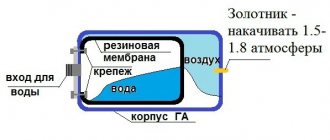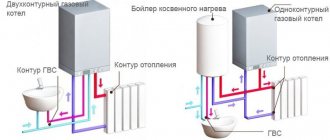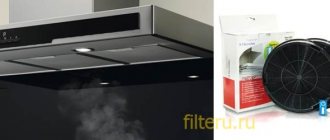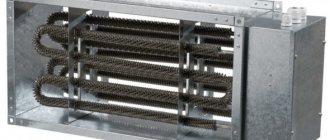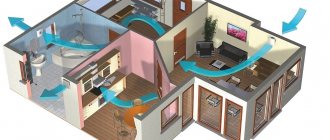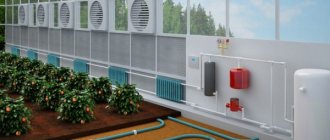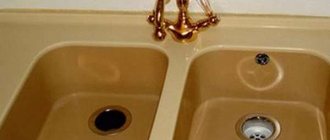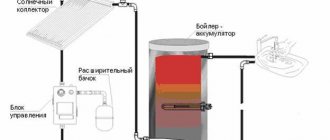Make your own air humidifier it is possible both from improvised means and using additional materials and devices. In this material we have collected the most interesting options for such a useful device for the home.
For information on how to choose a humidifier in a store, what types of humidifiers exist and which ones are considered the best, see here.
You can make the humidifier yourself in different ways, so as not to delay, you can immediately watch some of the methods in this funny video:
Operating principle and design of ultrasonic humidifier
The design of the simplest humidifier of this type consists of:
- water containers;
- a cartridge that softens and cleans the liquid from mechanical impurities and contaminants;
- piezo emitter;
- generator;
- low speed fan.
The design of a typical air humidifier
The operation of such a device is based on the transformation of water into a “cold mist”. Despite the design features and differences in functionality of the models presented on the domestic market, the operating scheme of the ultrasonic air humidifier is the same:
- distilled water is poured into the container;
- the liquid passes through a softening and removal cartridge;
- then it enters the evaporator chamber, where under the influence of a piezo emitter it turns into water dust.
The generator generates an electrical signal, with the help of which electrical pulses of the required frequency are set. The piezoelectric element membrane vibrates at a frequency of more than 20 thousand times per second, breaking water into particles that are so small that they do not settle under the influence of gravity and are held in the air. Using a fan installed in the housing, water mist is supplied to the nozzles of the device and enters the surrounding space.
Today, most modern models of such climate control equipment are additionally equipped with:
- a hygrometer to accurately measure the humidity level in the room;
- an electronic control unit that allows you to control the operation of the device and maintain a certain level of humidity in the premises;
- antibacterial filter containing silver ions.
Thanks to the use of a piezo emitter, the formation of water mist occurs without heating the water, which significantly reduces energy consumption and guarantees complete safety during operation of the device.
Connecting automation to an ultrasonic humidifier
Time relay
fog generator turn-on timer – Ultrasonic humidifier time relay
If desired, you can install a time relay. It consists of segments. Each segment is 15 minutes.
Selecting the modes for turning on the fog generator - Setting the modes for turning on the ultrasonic humidifier
By clamping a segment, you activate the relay for the clamped period.
The price of this device is 500 rubles.
Smart plug with humidity sensor
Humidity regulator smart socket
A smart plug allows you to control humidity. The device has 3 displays. The middle display shows the current humidity value in large red numbers. On the left display, green numbers indicate the lower humidity value, on the right display, the upper humidity value.
Through the double we connect the power supply of the humidifier and the fan to the smart socket. The built-in controller will turn on the humidifier when the humidity drops below the lower limit (left display value) and turn off the humidifier when it reaches the upper limit (right display value).
We recommend: An article about making do-it-yourself humidifiers of different capacities.
Advantages and disadvantages of an ultrasonic humidifier
Before choosing a high-quality ultrasonic air humidifier for a private house or apartment, you should familiarize yourself in detail with all the advantages and disadvantages of this climate control equipment.
Advantages:
- Quiet operation;
- Effective air humidification;
- Easy to operate;
- Compact dimensions;
- Low power consumption.
Modern models implement the ability to ionize air, automatically maintain the required level of humidity in the room, and automatically turn off when the water level drops below a critical level.
Flaws:
- High requirements for water quality;
- Additional costs for regular replacement of pre-filters;
- Need for maintenance.
Important! Water quality is the main factor determining the service life of this device.
When using hard water, lime dust will appear on the surfaces of interior items, and the efficiency of the piezo emitter will noticeably decrease. The limescale deposit does not directly cause any harm to a healthy person, but an asthmatic or allergic person may feel a deterioration in their health.
How is an ultrasonic humidifier better than a steam humidifier?
Modern ultrasonic humidifiers outperform steam humidifiers in efficiency and safety. The first produces “cold fog” and requires less energy. The body of the ultrasound device does not heat up, and the steam from the nozzles does not burn.
Attention: if you care about the cleanliness of the air and surrounding space, choose a steam humidifier. When heated, hard water salts settle in the tank, and high temperatures disinfect the escaping steam.
Homemade air humidifier made of expanded clay and a bucket
Expanded clay material has excellent qualities that make it an excellent basis for a humidifier.
Such a homemade air humidifier can both absorb and release moisture, so to speak, two in one.
This option will require additional materials, such as:
- Four mesh buckets (the kind used for garbage), two slightly larger and two smaller.
- Bucket, optimally 12 liters.
- Aquarium pump.
- Computer cooler with a diameter of 14 cm.
- Hairdryer (construction) which has a high heating temperature.
- Ties (plastic).
The first step in making such an air humidifier will be gluing the smaller buckets together. This can be done using a household hair dryer; if you don’t have one, then plastic fasteners will do.
Air humidifier made of expanded clay
Thus, we get a humidifier body that is empty inside. Large buckets also need to be connected. Before you do this, place your first creation inside.
To fill the voids in the humidifier with expanded clay, you need to cut off the roof of the top container or cut a hole into which it will be convenient to fill it. Please note that expanded clay must be selected with a fraction such that it does not spill through the mesh bucket.
Now a 12-liter bucket comes into play, an aquarium pump is placed at the bottom, and its tubes are brought to the top of the structure of mesh buckets, then we install a plastic ring with holes on top.
On top of this whole creation you need to mount a cooler, which will pump air into the expanded clay structure, which are saturated with moisture, and then through the holes the moisture will enter the room.
In this type of humidifier, it is very important to qualitatively select the main ingredient - expanded clay; the granules must be selected carefully and rinsed under running water before filling.
Varieties
The indoor atmosphere is only partially suitable for plants. Depending on the chosen variety of flora, it is important to maintain the temperature at 18-25 degrees, humidity not lower than 70% and illumination for 10-16 hours a day. Why do we need special devices? You need to select a device taking into account the initial conditions and type of room. The following types are distinguished:
- Steam;
- "Wet";
- Ultrasonic humidifier.
The first one works on the principle of a teapot. The water in the tank boils, causing it to change from a liquid to a vapor state. This one consumes a lot of electricity and if a power failure causes it to run non-stop, it could damage the greenhouse. The second variety is well suited for an apartment or house of plants whose growth areas are in our latitudes.
It is not suitable for creating a tropical climate. The operation of an ultrasonic air humidifier for plants is fundamentally different from its analogues. It has a remote control, the steam temperature does not exceed 40 degrees, which is optimal for blossoming flowers and plants during the growing season. There is a possibility of programming. There are also 2 in 1 models with an odor neutralizer, about which more details can be found in the thematic catalogue.
Traditional humidifiers
Traditional humidifiers humidify the air by “blowing” it through a cassette, filter, or other object heavily moistened with water. Thus, they work on the principle of natural evaporation. These devices consume relatively little electricity (from 20 to 60 W) and moderately purify the air during operation by settling some of the dust in the water. The key disadvantages of such devices are their relatively low performance and the need to regularly change the water (it gets dirty) and the filter/cassette (however, some can be washed multiple times - then you can change them, for example, once a year). The main advantage is that with this method of humidification, the air is humidified the worse, the higher its humidity - thus, the optimal level of humidity begins to be maintained automatically over time. Well, cleaning the air from dust is also a useful function.
Traditional humidifier Boneco Air-O-Swiss
Ultrasonic humidifiers
Ultrasonic humidifiers create cold steam (actually, to be physically precise, more like fog) consisting of tiny water particles. “Grinding” of water is done using a special membrane that vibrates at high frequencies (hence the name of this type of device). Ultrasonic models on average consume no more than 50 W, have average performance and sometimes allow the possibility of heating water. The steam will thus be supplied heated and the room will not be cooled. It is clear that for such an option you will have to pay not only with the increased price of the device itself, but also with increased energy consumption. One of the key complaints about ultrasonic humidifiers is the appearance of a characteristic white coating on furniture if ordinary tap water is used. In addition, if the ultrasonic humidifier does not have a built-in humidity sensor (hygrometer), it will humidify the air even after reaching the required humidity level - no “self-regulation” occurs in this case, as is the case with traditional humidifiers.
Ultrasonic miniature humidifier Redmond RHF-3308
Steam humidifiers
Steam humidifiers, as you might guess, provide humidification from the air by spraying hot steam. The operating principle of such a device is very simple: water is supplied to a special container in which it is heated and evaporated. Such a device will not require special filters for cleaning and will be easy to maintain. You will have to pay for this with increased energy consumption and, as a result, an increase in the temperature in the room (which, however, can also be interpreted as an advantage if the humidifier is intended to be used where heating would not interfere). An additional advantage is that humidification occurs with steam - that is, in fact, with distilled water.
But the increased noise level cannot be called an advantage: not everyone will like using a steam humidifier in the bedrooms. There have also been complaints that such devices dry out indoor plants, and if the power of the device is chosen incorrectly (if the humidifier is too powerful, or if it is installed in too small a room), it is easy to create a sauna effect in the room.
Steam humidifier Stadler Form Fred F-008EH with a fun design
With hot evaporation
The design consists of a water container and two electrodes to which voltage is applied. Since water is a conductor, an electrical circuit is completed, heating the water. The resulting steam is picked up by a stream of air from the fan. The action continues as long as there is water in the device. As soon as it boils away, the work stops.
Such devices are equipped with additional ionizers and UV lamps that purify and disinfect water. The steam outlet temperature is from 60°, so do not install them next to furniture or in children's rooms.
With cold evaporation
Only part of the volume of poured water is heated. A plastic bottle serves as a feeder tank, from which water flows in small portions onto the tray and into the evaporator. The volume of evaporated water is small and does not require high power heating elements.
High-quality water filtration is carried out using step filters. The steam released reduces the amount of harmful bacteria and unwanted particles in the air.
Fill only with distilled or purified water, this will increase the service life of the filters.
Such devices normalize the microclimate more effectively than others. If you place the device near radiators or convectors, the circulating air will be saturated with water vapor and this will ensure a more even distribution of steam throughout the room.
Humidifier from a plastic bottle
There is an easy-to-implement DIY air humidifier made from a plastic bottle that will give the effect of cold steam. To do this you will need a large (10L) plastic bottle, a computer cooler and tape. Assembly sequence:
- You need to cut the neck of the bottle so that the cooler fits into the resulting hole.
- Now you need to secure the cooler, this can be done in two ways: simply put it in the hole and wrap it with tape or cut out fasteners from thick cardboard. Namely, take it, attach the cooler and cut a hole a little smaller than the cooler, and then attach it all to the bottle with the same tape. The second option will be more reliable.
Humidifier made from a plastic bottle - Now all that remains is to plug in the cooler and enjoy the “correct” air.
Such a humidifier can be made from a large plastic container; due to the fact that such containers have legs and a tight lid, as well as a significantly larger volume, it will be more convenient for you to use this option.
In this case, you need to cut a hole directly in the roof of the container; all other steps are similar to the previous one.
Humidifier from a plastic bottle, video:
Humidifier made of plastic box
A slightly more complicated option, but also more effective. For such a humidifier you need to take 2 plastic boxes, one larger - 30 liters, the second smaller, it should be mesh and fit into the larger one. In addition, you need gauze (bandage), wire or fishing line, and a fan.
It is made in this way:
- Wire or fishing line is attached to the top of the mesh box so that it is taut.
- Cut bandages or gauze are hung on the fishing line (wire) so that they reach the bottom.
Air humidifier made of a plastic box - Water is poured into a large container and a small one is placed so that its lower part is dipped into water, thereby moistening the suspended bandages.
- A hole is cut in the lid of a large container to the size of the fan, then the fan itself is fixed in it.
- The resulting structure is covered with a lid, and the fan is connected to the network.
Thanks to the use of a fan, the system operates very quietly, without creating discomfort for the residents of the apartment, water consumption is about 1.4 liters in 6 hours, per day it will be 5.6 liters - a very good option, and most importantly, effective.
Humidifier-air purifier, video:
Which humidifier to choose for a greenhouse?
A greenhouse humidifier must meet the following criteria:
- efficiency
- ease of installation and maintenance
- optimal cost
- low power consumption
The following humidifiers are used for greenhouses: nozzles (direct water spray system), ultrasonic humidifiers (formation of a steam-air mixture), as well as evaporative (adiabatic) humidifiers (supplying very humid air). If we consider each greenhouse humidifier from the point of view of the four criteria listed above, then the most modern and adequate method will be evaporative (adiabatic) humidification.
Efficiency.
SABIEL adiabatic humidifiers have:
- Huge evaporation surface
- Multi-stage built-in fan, allowing you to select the optimal and effective speed of uniform air mixing in the greenhouse.
Easy installation and maintenance.
Adiabatic air humidifiers for SABIEL greenhouses are easy to install, often without the involvement of third parties. Maintenance of the device consists of regularly emptying the tank (carried out automatically) and washing the filters, which also does not involve additional labor resources and does not cause long process stops.
Optimal cost
The cost of SABIEL adiabatic humidifiers per unit area of the greenhouse is more than reasonable compared to the costs of other types of humidifiers.
Low power consumption
The average energy consumption of a SABIEL air humidifier for a greenhouse with an area of 150÷200 m2 is 1.1 kW/h, which is much lower than the consumption of a household kettle or iron.
For different types and areas of greenhouses, it is possible to select the most optimal SABIEL adiabatic humidifier or a group of these humidifiers. Possible: control of a group of devices and transmission of a signal to the control computer.
- Rating of the best manufacturers of ultrasonic air humidifiers
In order to help a potential buyer in choosing this useful device, we present a rating of the best humidifiers in various price segments, based on reviews from real owners. Today, manufacturers of climate control equipment of the following brands are popular among domestic consumers: BONECO, ELECTROLUX, SHARP, PHILIPS, SHIVAKI, POLARIS, WINIA, FANLINE.
What does an ultrasonic device consist of?
In general, the design of an ultrasonic type humidifier is very simple, but based on innovation. Let's look at what this device contains.
- Water container. Most containers are equipped with sensors that tell you when the water level is too low and needs to be refilled. This is the part that will require maintenance and regular cleaning.
- Transducer: This is a device that generates high frequency vibrations, which causes the water to turn into mist. This advanced piece of technology is a leading factor in what makes the ultrasonic device so easy to use and maintain.
- Control panel: Allows you to adjust the device. If you want to control when the water in the container runs out or to have the device automatically turn off at these moments, use the control panel where you can record these settings.
- Ultrasonic generator: powers the power converter, without the generator the converter will not work. The generator is another detail - an example of advanced technology, which fundamentally distinguishes the ultrasonic device from other humidifiers and makes it easy to operate.
The most popular models of ultrasonic humidifiers, customer reviews
An indicator of the model’s popularity is stable demand and high customer ratings. If you analyze the Yandex.Market data, you can identify several best-selling models that have earned an honorary o. Let's look at some of them
Stadler Form EVA little E-014
Stadler Form EVA little E-014, cost 9304 rubles
Compact device with high power. It evaporates 320 ml of liquid per hour and is capable of radically transforming the atmosphere in a room of up to 50 m².
CS Medica KIDS CS-19h
CS Medica KIDS CS-19h, cost 2416 rubles
A simple and safe device for a children's room that can increase the humidity level up to 60%. Designed for rooms up to 18 m².
Scoole UL 06E
Scoole UL 06E, cost 1399 rubles
An inexpensive device that can serve an area of up to 22 m². Works without interruption on one tank for 10 hours and consumes 300 ml of water per hour.
Leberg LH-20
Beautiful floor-mounted humidifier with sensitive touch panel
Expert rating:93/ 100
Powerful unit with large water tank and 4-way adjustable spray nozzle. Placed on the floor or windowsill. Serves medium-sized rooms, offices and workspaces. A pre-filter is located at the bottom of the device. The kit also includes a demineralizing cartridge to improve the quality of the sprayed water.
Technical specifications
- power - 30 W
- power source - electrical network
- installation - floor
- Duration of continuous operation - 10 hours
- control - electronic
- remote control - yes
- noise level - 35 dB
- timer - for 1, 2, 4 and 8 hours
- indication - switching on, temperature, low water level and humidity
- case backlight - yes
- additional functions - air ionization, adjustment of evaporation intensity and fan blade rotation speed, automatic shutdown if there is no water in the tank
- weight - 3 kg
- dimensions - 230x230x720
- assembly - China
The model provides adjustment of the display brightness level. This makes it possible to place the humidifier in the bedroom or nursery. It definitely won’t interfere with your night’s rest.
Advantages
- Availability of a hygrostat
- Adjusting the display brightness
- Night mode
- Spectacular design
- Convenient filling of water into the tank
Flaws
- Poor build quality
- Thin plastic body
- Instructions are unclear
Royal Clima Sanremo (RUH-S380/3.0M)
Budget model with good technical characteristics and high performance
Expert rating:90/ 100
The unit looks good in the interior and takes up minimal space. A stable position on the surface is ensured by stable legs with a non-slip coating. Suitable for installation in residential or office spaces. It humidifies the air well even where a powerful heating system is operating.
Technical specifications
- power - 25 W
- power source - electrical network
- installation - desktop
- Duration of continuous operation - 8 hours
- control - mechanical
- remote control - no
- noise level - 35 dB
- timer - no
- indication - switching on
- case backlight - yes
- additional functions - deep water purification using five carbon filters
- weight - 0.97 kg
- dimensions - 170x297x163 mm
- assembly - China
The distinctive features of the device are its pleasant appearance and economical energy consumption. There are no difficulties with the controls. Even a child and an elderly person who is far from technology can set the necessary operating parameters.
Advantages
- High-quality plastic housing
- Does not make any extraneous sounds during operation
- The legs have an anti-slip coating
- It is possible to select the direction of steam supply
- Low price
Flaws
- Excessively bright LED
- After the aromatherapy procedure, it requires thorough rinsing.
- Small hole for filling water
Polaris PUH 7205Di
A simple, lightweight humidifier with a ceramic filter for air purification that works for more than a day on one fill.
Expert rating:91/ 100
The device is available in a plastic case of different colors. It humidifies the room well, performs air ionization and aromatization. It is connected to the network with a one and a half meter cable. Due to the bright display, it can be used at night as a night light.
Technical specifications
- power - 25 W
- power source - electrical network
- installation - desktop/floor
- Duration of continuous operation - 35 hours
- control - touch
- remote control - no
- noise level - 35 dB
- timer - for 1, 2, 4 and 8 hours
- indication - switching on, room humidity level, current temperature
- case backlight - yes
- additional functions - ionization, aromatization
- weight - 1.1 kg
- dimensions - 300x170x170 mm
- assembly - China
Inexpensive but effective model suitable for use in large spaces. Does not require constant addition of water to the tank. It does not require complex care and can easily withstand intensive use. Maintains humidity at 50-60% without consuming unnecessary energy resources.
Advantages
- High efficiency
- Informative display
- 3 steam speeds
- Optimal cost
Flaws
- Inconvenient way to fill water
- The inscriptions and symbols on the buttons wear out quickly
- No remote control
- The plastic case is prone to cracking even if the device is treated with care
- No tank lid lock
PROFFI PH8751
Small and economical module for humidifying a small room
Expert rating:94/ 100
The compact device looks extraordinary and stylish. Doesn't take up much space, easy to assemble and controlled with one button. Quickly humidifies the air in a small room.
Technical specifications
- power - 2 W
- power source - electrical network
- installation - desktop
- Duration of continuous operation - 6 hours
- control - electronic
- remote control - no
- noise level - 36 dB
- timer - no
- indication - no
- case backlight - yes
- additional functions - flavoring
- weight - 0.14 kg
- dimensions - 88x153x88 mm
- assembly - China
The humidifier is suitable for use in a small room or small office. You can carry the device with you and humidify the room you are in temporarily.
Advantages
- Compactness
- Attractive appearance
- Option to turn off humidification
- 7 backlight modes
Flaws
- Poor hydration
- Low efficiency in large rooms
- Works only from USB
Marta MT-2691
Inexpensive, powerful unit with a spacious water tank, a minimum of functions and basic controls
Expert rating:95/ 100
The humidifier looks stylish and attractive. Thanks to the rubberized legs, it stands firmly on the floor or other flat surface. There are no difficulties with control. On the front part there is an ergonomic regulator that allows you to set the required operating parameters.
Technical specifications
- power - 30 W
- power source - electrical network
- installation - floor
- Duration of continuous operation - 40 hours
- control - mechanics
- remote control - no
- noise level - 35 dB
- timer - no
- indication - low water level in the tank
- case backlight - yes
- additional functions - aromatization, automatic shutdown
- weight - 1.9 kg
- dimensions - 210x200x490 mm
- assembly - China
The model is worth purchasing for those who want to humidify the air in a large room without spending serious money or significant energy resources on it. The product is also suitable for users who prefer household appliances with a minimum of necessary functions and simple controls.
Advantages
- Stylish look
- Smooth humidity level adjustment
- Non-marking body
- Rubberized feet
Flaws
- Plastic smell upon first use
- Short network connection cable
- The light bulb on the body is too bright
- Incomplete threads on the top cap (difficult to tighten tightly)
- Few additional options
Operating principle of an ultrasonic humidifier
An ultrasonic humidifier is considered universal. During operation, it transforms water into a light mist of tiny splashes invisible to the eye. A fan built into the device sucks in dry air and directs it to enrich it with moisture into a water cloud created by high-frequency vibrations.
The air flow is saturated with life-giving moisture, leaves the device and disperses throughout the room. The humidity level increases and reaches optimal levels.
In living rooms and offices, air humidity should be 45-60%. With such indicators, both adults and children, who are especially susceptible to a dry atmosphere, feel comfortable
The ultrasonic module demonstrates high performance with minimal power consumption. Makes it possible to humidify the air in the room up to 80%. During operation it makes almost no noise and rarely makes any extraneous sounds.
The key advantage of the product is absolute safety for others. The device does not produce hot steam. The case does not heat up and it is simply impossible to get burned if you accidentally touch it.
The only drawback is the demands on the quality of the water being poured. It is not advisable to use tap liquid. If the water is clogged, an unaesthetic white coating will appear on furniture, household appliances, decorative elements and other items in the room. If you fill the tank with distilled water, this problem will not arise.
Read on to learn more about what kind of water to put into your humidifier.
Rules of use and care
You will have to say goodbye to some of the advantages of a ultrasonic humidifier if you do not comply with the operating requirements. Do not forget that all humidifiers are energy-dependent devices that operate on an electrical network, so they are a priori dangerous if handled carelessly.
The best place to install a humidifier is a free space in the center of the room. This way the moisture will spread evenly around the entire perimeter of the room.
Some operating standards are prescribed by the manufacturer, others are well known and do not require reflection in the instructions.
So, in order for the humidifier to work for a long time, properly and without causing trouble, follow the rules:
- Remove the tank to fill with water only when the power is turned off.
- Use filtered water. If the device has filters, change them on time.
- When using hard water, deposits are deposited inside the structure. To prevent this from happening, the device is regularly cleaned with a solution of citric acid (per 1 liter - 30 grams of dry matter).
- In addition to citric acid, it is allowed to use vinegar, special products for plastic, soap solutions without antibacterial inclusions, and anti-scale agents.
- For reading, you cannot use alcohol solutions, acid other than citric acid, chemical solvents, oils, bleaches, abrasives, or hard brushes. Washing parts of the device in the dishwasher is also prohibited.
- The body of the device is wiped with a micro-lint cloth soaked in water, the tank is removed, soaked and wiped, and the internal elements are also soaked in the solution for 15 minutes.
If the device has an electronic display or indication, carefully monitor the signals and follow the prompts. Manufacturers have tried to make it as comfortable as possible for users of UV devices to use them.
If the device breaks down and you cannot fix it yourself, we recommend contacting a service center. The warranty on some devices is 1 or 2 years, during which time you are required to repair or replace the equipment free of charge.
Humidifier with antibacterial filter
For such a device, you naturally need a filter, in addition, a low-speed fan (12V) and a plastic box.
A moisturizing sponge with antibacterial impregnation is a key part of such a humidifier; it is capable of trapping large particles, dust and hair. Impregnation prevents germs from spreading.
The assembly process is not particularly difficult. In a plastic container, you need to make a cutout in the side about half the height of the filter, then it needs to be secured with a plastic tie or any other way.
A fan is attached to the lid of the container, for which a hole is cut out prematurely. The last stage is pouring water; its level should be slightly lower than the height of the side slot. Everything is ready, all that remains is to plug it into the outlet.
Do not forget that such a filter needs to be changed regularly; this need can be seen by its color - it darkens, but at least once every three months.
Another version of the humidifier will have a similar design, only instead of a filter there will be gauze, and for the convenience of pouring water, you can make a hole in the container lid with the same diameter as the neck of a watering can.
Its advantage is that there is no need to purchase a filter. For an additional effect, you can add a few drops of essential oil to the water, which will provide both moisturizing and aromatization.
Decorative air humidifier
All these designs are not very attractive, but if you crave aesthetics in everything, then this humidifier option will suit you.
In order to make it, you need to take a bowl, preferably blue or light blue. You can stick pebbles inside it and on the edges using special glue; if you have plastic fish, then they will go too - in general, to create a marine ambience, you can throw pebbles on the bottom. Fill the whole thing with water and place it near the battery.
You can make any stylization that you like and what you have enough imagination for. It will be especially interesting for children to watch such a humidifier, and they will certainly help you replenish the water resources in it.
Possible problems
There are typical malfunctions, the causes of which in most cases are the same. For example, the indicators on the device do not light up and no steam appears. This means that: either the humidifier is not connected to the network (this happens to everyone), or there is no voltage in the network. If the indicator is on but there is no steam, the problem may be that the liquid reservoir is empty or, on the contrary, the reservoir is full. It is worth noting other common problems, namely:
- when turned on, unpleasant odors are felt - either the device itself is new, or the water is dirty or simply stagnant;
- there is little steam - this may be contamination of the emitter or the same stagnant water;
- a lot of noise - there may not be enough water in the tank or it may simply be that the humidifier is unsteady on the surface.
Important! Try to use only distilled or boiled water to operate the device. Clean the water tank twice a month and change the water more often. Treatment with vinegar followed by a good rinse is acceptable.
Benefit or harm
Like any other device aimed at optimizing the indoor microclimate, a humidifier has both positive and negative effects on human health, which determines the ultrasonic emitter for the humidifier.
The positive ones include:
- Normal humidity in the apartment prevents the development of some respiratory diseases. Excessive dryness can damage the protective properties of the mucous membrane of the nasopharynx and larynx, which creates the ground for the development of pathogens. They cause a variety of illnesses ranging from bronchitis to pneumonia, especially in children.
- Dry indoors have a negative impact on the skin. Doctors believe that this provokes the development of many diseases and contributes to aging.
- Moisturizers help strengthen natural immunity and also protect the body from dehydration.
- Low humidity also has a bad effect on the human nervous system. Having a humidifier prevents these ailments.
- Wooden furniture also suffers from dryness. The operation of a humidifier helps preserve wooden surfaces for a longer period.
- Houseplants also need moisture, so a humidifier becomes a necessary accessory if you have them in your home.
- The ultrasonic type is safer to use: its operating principles significantly reduce the risk of burns from steam, since the humidifier does not heat the water.
- Such devices consume less electricity than their predecessors.
- Many models have additional mechanisms for air filtration, helping to reduce the amount of dust and pathogenic bacteria in the apartment.
- These devices often have an automatic safety system that allows you to turn off the device in time if, for example, there is no water in it.
The ultrasonic membrane of the humidifier causes disadvantages - when using cheap models that are not equipped with additional filtration systems and low-quality water rich in harmful microelements, they are more likely to pollute the air. Everything contained in the water is released into the environment along with the steam. These salts, minerals and heavy metals settle on furniture, human skin and the entire space of the apartment. The harm of ultrasonic vibrations produced by the humidifier membrane is also often discussed.
In order to get the maximum benefit from using the evaporator, you need to follow the operating rules and safety precautions, and take into account the operating principle of the humidifier. You should use only distilled or filtered water, or models with a multi-stage purification system, which will reduce the amount of harmful substances in the mist. It is also necessary to observe the recommended humidity level in the apartment, because too high a value creates a favorable environment for the proliferation of harmful bacteria.
Simple options for humidifying the air at home
It is not always possible to buy or ask men to make a humidifier in the house with their own hands from plastic dishes. Therefore, several recommendations for women on how to assemble a simple air humidifier with their own hands:
- place a container of water near the radiator, lower the edge of a damp towel into the reservoir of water, and spread the rest of the cloth over the heating device;
- Place a container on the battery and periodically add water to it, preferably the container is metal, and the moisturizing effect will be achieved;
- put a glass dish, such as an aquarium, a vase or a simple jar, lower an ordinary aquarium compressor into it and place a small fan nearby, preferably a computer cooler. To make this humidifier look aesthetically pleasing, you can put glass pebbles and plastic figures in transparent dishes; they will imitate ikebana.
An elementary way is to have a large aquarium with all the equipment; it’s true, it’s simple, but not cheap.
Instructions for making an air purifier
Dust particles and bacteria in the air are invisible, and even constant wet cleaning is not able to remove them. Factory-made air washers are very expensive and not everyone can afford them. It is possible to make a humidifier-air purifier with your own hands using available materials. For example, how you can use old disks:
- the surface of the disks must be sanded, the gloss removed, and plastic pieces soldered to the edges;
- place prepared disks on a tube with a diameter of 15 mm, alternating with plastic washers 3 mm thick;
- install several coolers from the computer in a rectangular shape to draw in air;
- install the shaft with disks and connect a small toy motor to it;
- install a fan in the lid of the container to extract humidified air;
- Fill with water so that it does not reach the coolers and plug in.
An air purifier assembled in this way at home can be used not only in houses and apartments, but also in other utility rooms.
For entrepreneurs involved in poultry breeding, it is easier to assemble a humidifier for an incubator with your own hands than to buy expensive factory equipment. Humidity and cleanliness of the air in such rooms are very important for the young brood.

